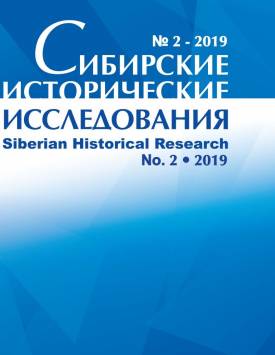Silakryashen: the virtual life of an unrecognised people
The article is devoted to the study of Kryashens' cyber-ethnicity on the basis of field and (cyber) field sources. It focuses on the boundaries of reality and virtuality, current topics and discussions, the specifics of ethnic project implementation, especially the use of the native language on the Internet. The general popularisation of social networks in Russia in 2008-2010 took place in parallel with the emergence of Kryashen offline projects and identification. The examples presented in the article demonstrate that the Internet activity of the Kryashen community depends on its internal state: as the feeling of 'ethnic' well-being is on the rise, the activity of users decreases; and on the contrary, the feeling of discomfort motivates more active online positioning. According to the survey, the Kryashens highly appreciate the possibility that the Internet provides to develop one's ethnic identity, but they call for balanced development of both offline and virtual projects. Cyberspace allowed the Kryashens to define their community by showing its boundaries and position among other ethnic groups. If, at first, they were treated with caution by other peoples (with some provocative comments and messages), now there is a growing interest in the Kryashen ethnic culture. It is possible that dialogue (though virtual one) helped them maintain good neighbourly relations with others. After the 2013 arsons at churches, virtuality turned out to be a platform for competition among the Kryashens themselves. Despite the fact that the topic of arsons has stopped being in the spotlight for a long time, it has had a lasting effect on the relations within the ethnic community. A few years ago, the Kryashens came up with a new popular hashtag - '#сила-кряшен' (#silakryashen, meaning 'the power of the Kryashens'), which, according to them, means 'the duty to maintain unity'. #silakryashen may have emerged against the backdrop of disagreement within the community and as a reflection of its inner atmosphere. The hashtag serves as the Kryashens' slogan, combining a call for resistance and harmony, the memory of the past and the dream of the future.
Keywords
кряшены, виртуальная этничность, киберэтнография, идентичность, социальные сети, ВКонтакте, Instagram, этнопроект, хештег, Kryashens, virtual ethnicity, cyber-ethnography, identity, social networks, VKontakte, Instagram, ethno-project, hashtagAuthors
| Name | Organization | |
| Belorussova Svetlana Y. | Peter the Great Museum of Anthropology and Ethnography (the Kunstkamera) of the Russian Academy of Sciences; National Research University 'Higher School of Economics' | svetlana-90@yandex.ru |
References

Silakryashen: the virtual life of an unrecognised people | Sibirskie Istoricheskie Issledovaniia – Siberian Historical Research. 2019. № 2. DOI: 10.17223/2312461X/24/3
